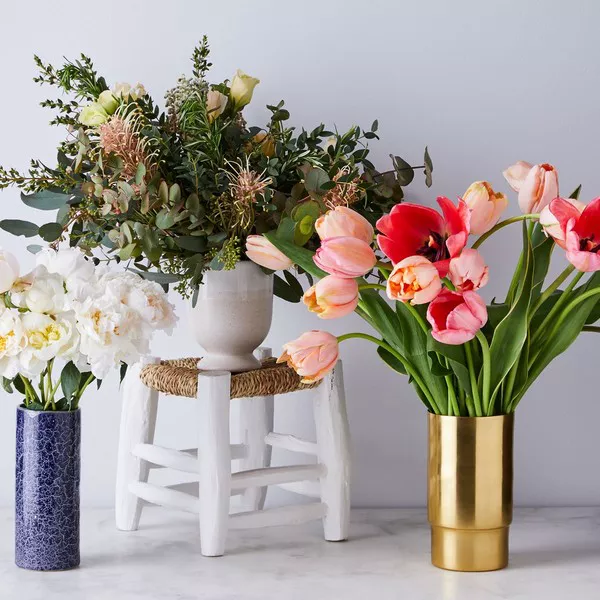Flower arrangement, often regarded as an art form, has captivated human creativity for centuries. From simple home décor to elaborate event centerpieces, the way flowers are arranged can convey various emotions, themes, and aesthetic preferences. Understanding the different types of flower arrangements opens up a world of possibilities for floral enthusiasts, designers, and anyone seeking to add a touch of natural beauty to their surroundings. In this comprehensive guide, we’ll delve into the various types of flower arrangements, exploring their characteristics, techniques, and popular uses.
1. Traditional Flower Arrangements
Traditional flower arrangements adhere to classical principles of balance, harmony, and symmetry. These arrangements typically follow established design styles, such as Ikebana (Japanese), English Garden, and Victorian. Ikebana, for instance, emphasizes minimalism and asymmetry, with a focus on the natural lines and shapes of plant materials. English Garden arrangements, on the other hand, evoke the lush, unrestrained beauty of a cottage garden, often featuring a mix of seasonal blooms and foliage. Victorian arrangements tend to be more formal and structured, with an emphasis on layering and the use of ornate containers.
2. Modern Flower Arrangements
Modern flower arrangements break away from traditional constraints, embracing innovative techniques, unconventional materials, and avant-garde design concepts. Contemporary floral design often incorporates elements of abstract art, minimalism, and sustainability. Examples include installations, where flowers are arranged to create immersive experiences, and eco-friendly arrangements using recycled or upcycled materials. Modern arrangements may also feature unconventional color palettes, geometric shapes, and unexpected juxtapositions of textures.
3. European Flower Arrangements
European flower arrangements encompass a wide range of styles influenced by the diverse floral traditions of the continent. From the opulent splendor of French floral design to the rustic charm of Mediterranean arrangements, European floristry reflects the rich cultural heritage of its regions. Dutch floral design, known for its bold use of color and sculptural forms, is particularly renowned for its innovative approach to floral composition. Other notable European styles include German, Belgian, and Italian floral arrangements, each with its own distinct characteristics and techniques.
4. Asian Flower Arrangements
Asian flower arrangements, rooted in ancient traditions and philosophies, offer a unique perspective on the art of floral design. Ikebana, the Japanese art of flower arranging, emphasizes simplicity, balance, and harmony with nature. Ikebana practitioners carefully select and arrange flowers, branches, and leaves to create compositions that evoke a sense of tranquility and contemplation. Similarly, Chinese flower arranging, influenced by Taoist and Confucian principles, seeks to capture the essence of natural beauty through asymmetrical designs and symbolic arrangements.
5. Seasonal Flower Arrangements
Seasonal flower arrangements celebrate the beauty and abundance of nature throughout the year. From spring blossoms to winter greens, each season offers a distinctive palette of colors and textures to inspire floral creations. Spring arrangements may feature delicate blooms like tulips, daffodils, and cherry blossoms, symbolizing renewal and growth. Summer arrangements often incorporate vibrant flowers such as roses, sunflowers, and hydrangeas, evoking warmth and vitality. Fall arrangements embrace rich, earthy tones and textures, with dahlias, chrysanthemums, and foliage reflecting the changing landscape. Winter arrangements focus on evergreens, berries, and seasonal accents like poinsettias and amaryllis, imparting a sense of coziness and festive cheer.
6. Formal Flower Arrangements
Formal flower arrangements are characterized by their meticulous attention to detail, symmetry, and elegance. Often used for special occasions and ceremonial events, formal arrangements exude sophistication and refinement. Examples include cascading bouquets, which feature flowers arranged in a flowing, waterfall-like manner, and pedestal arrangements, where blooms are elevated on tall stands for maximum impact. Formal arrangements may also incorporate intricate floral patterns, such as rosettes, spirals, and fan shapes, achieved through precise placement and careful manipulation of stems and foliage.
7. Informal Flower Arrangements
Informal flower arrangements embrace a more relaxed and naturalistic aesthetic, eschewing rigid rules in favor of organic shapes and spontaneous compositions. Often associated with rustic weddings, garden parties, and casual gatherings, informal arrangements convey a sense of warmth, intimacy, and charm. Hand-tied bouquets, where flowers are loosely bundled together and tied with ribbon or twine, epitomize the effortless beauty of informal floral design. Other informal styles include garden-style arrangements, featuring a mix of seasonal blooms and foliage arranged in a loose, unstructured manner, and wildflower bouquets, inspired by the untamed beauty of meadows and fields.
8. Ikebana Flower Arrangements
Ikebana, the ancient Japanese art of flower arranging, is revered for its simplicity, elegance, and deep spiritual significance. Practitioners of Ikebana, known as ikebanists, follow strict principles and techniques handed down through generations. The key elements of Ikebana include line, form, and space, with emphasis placed on the natural beauty and symbolism of plant materials. Ikebana arrangements typically consist of three main components: the shin (heaven), representing the tallest element and symbolizing the divine; the soe (man), representing the secondary element and symbolizing humanity; and the hikae (earth), representing the lowest element and symbolizing the material world. By arranging these elements with precision and sensitivity, ikebanists seek to create harmonious compositions that evoke a sense of tranquility and reverence for nature.
Conclusion
Flower arrangement is a multifaceted art form that encompasses a wide range of styles, techniques, and cultural traditions. Whether adhering to classical principles or pushing the boundaries of contemporary design, floral enthusiasts have endless opportunities to express their creativity and appreciation for the natural world. By exploring the different types of flower arrangements outlined in this guide, individuals can discover new inspirations, refine their skills, and create captivating floral compositions that delight the senses and uplift the spirit.


